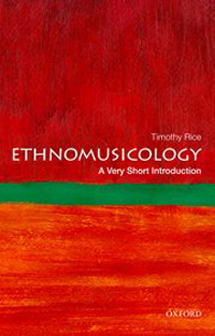Jonathan L. Friedmann, Ph.D.
The seventh volume of The Roberts English Series, published in 1968, notes that several academic disciplines end with –ic. Roberts observes that some of these take the plural form, like physics and mathematics, while others, like arithmetic and music, do not. Moreover, words like mathematics “are usually construed as singular, despite the plural form.” Two oversights are made in this brief grammar lesson. First, by the 1960s, ethnomusicologists were using the term “musics.” To be fair, the discipline’s newness and relative obscurity would have made the neologism easy to pass over. Second, unlike mathematics, “musics” was meant to emphasize the multiplicity of musical expressions. It was not a singular noun in the guise of a plural, but a plural noun that challenged age-old assumptions about music.
It is hard to pinpoint when or by whom “musics” was coined. It appears in the title of the multi-volume Bibliography of Asiatic Musics, the first installment of which was printed in 1947. With the launching of the Ethno-Musicology Newsletter in 1953, the founding of the Society of Ethno-Musicology in 1954, and the development of ethnomusicology graduate programs at UCLA and elsewhere in the 1960s, musics gradually became a preferred academic term. In contrast to the singular form, which implies a monolithic phenomenon (as in the German die Musik), the plural highlights the multiplicity of cultural manifestations, each of which should be appreciated on its own merits.
Some of the earliest references to musics are found in studies on American musical styles. For instance, The Story of Jazz (1956) by Marshall W. Stearns sets out to examine “jazz in a perspective of the musics of the world to show how it differs from other music.” John A. Flower’s article “The Composer in Today’s World,” from a 1964 issue of the Michigan Quarterly Review, states: “We can talk about American music, but only in the abstract. What we have is American musics. The sum total of our musics is not at all the same reality that the term American music implies.” Neither author was an ethnomusicologist: Stearns was a jazz critic and Flower was a classical pianist. And neither was writing on music outside of his own culture. Yet both were attuned to the emerging lexicon of ethnomusicology, either through direct involvement or by absorbing the zeitgeist.
Musics received an official seal of approval with its inclusion in Alan P. Merriam’s influential tome, The Anthropology of Music (1964). Merriam was a founder of ethnomusicology, which he defined as “the study of music in culture.” While recognizing music as a universal human activity (one of the cornerstones of the discipline), he felt that the particularistic forms comprising the universal were better represented in the plural.
Since the 1960s, musics has become the signature term of ethnomusicology. Although it clashes with the general rules of grammar, it is widely used to convey the rich diversity of global musical customs, textures, and sounds.
Visit Jonathan’s website to keep up on his latest endeavors, browse his book and article archives, and listen to sample compositions.

